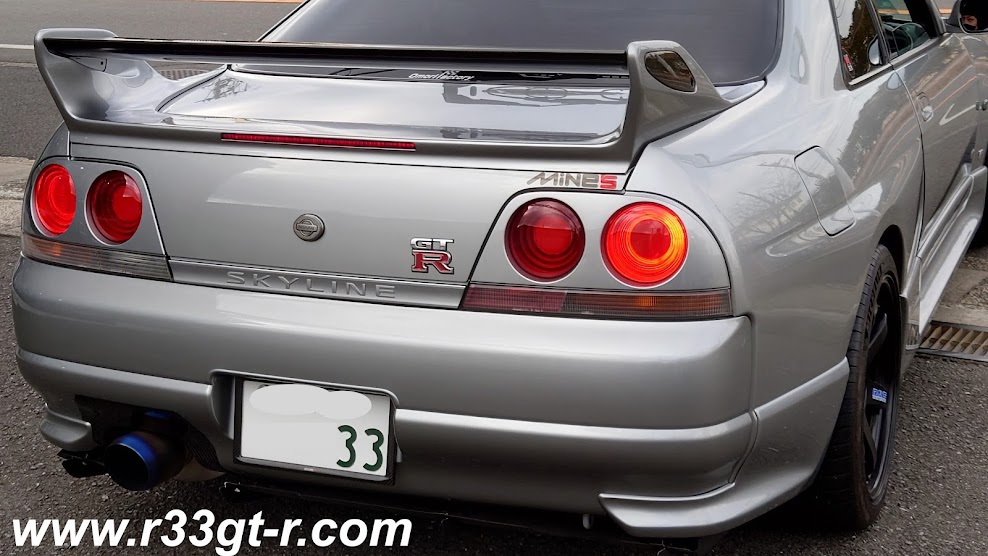This time, I asked him to take care of the bi-annual "shaken" - the road-worthiness "inspection" + plus tax payment required for all street legal cars in Japan and then, as Dino had agreed with me when he drove my car, to have the Öhlins DFV coil-overs rebuilt.
The shaken is something that HAS to be done, by law... unfortunately, the stringent rules means that, for any car that is moderately tuned, unless you leave your car with someone who knows a few tricks, or is required to be scrupulously honest and "by the book" (i.e. a dealership), your car will fail and be "mandated" to have expensive repairs done to make it "roadworthy" again.
Because Ninomiya-san has a long history of working on race and drift cars, he knows how to "massage" them to get them road legal. For example, I'm pretty sure (and he agrees) the Tomei ExPreme titanium exhaust, as fitted on my car, is too loud to be road legal. And yet he apparently has a special exhaust insert which he uses to muffle the sound to legal levels. For cars that are lowered, there are ways from setting coil-overs to their highest setting, to over-inflating the tires, etc., to ensure the car has 9cm between its lowest point and the road. In any case, I can trust him to get the car to pass shaken with minimum hassle and fuss.
Also, I figured that, since the car would be with him, I would leave my old Nismo S-Tunes shocks with him (that I did not throw out), so he could put those on the car while he sent the Öhlins in to be rebuilt. Even though I don't drive my GT-R as much as I used to, as I have mentioned earlier I had recently begun noticing that the ride seemed a bit too stiff, with the coil overs not responding quickly enough.
As a refresher, here is the link to when I first had these Öhlins installed, as well as the propaganda from Öhlins (Japan) as to what makes them better than the average aftermarket coilover. And here is what Öhlins (Sweden) says (they are now called their "Road & Track" model). These following two diagrams, both taken from the English language website, demonstrate the difference:
 |
| From the Öhlins website - "Without DFV, the oil cannot flow through the piston quickly enough on the rebound stroke after a bump, so the tyre is not able to stay in contact with the road. |
 |
| From the Öhlins website: "The DFV valve opens, letting the oil flow quicker though the piston on the rebound stroke after hitting a bump, enabling the tyre to stay in contact with the road." |
Also, since the model I have was released, there have been some improvements Öhlins has made to the DFV model. Or rather, it appears that they now offer a "rubber bushing upper mount" model in addition to the standard "pillow ball upper mount" model which is what mine are.
So I left the car with Ninomiya-san asking him to take care of everything, the shaken as well as getting the Öhlins rebuilt with those rubber bushings...
The following Friday, Ninomiya-san called me, with the shaken already done!
 |
| Another customer car that was there... a race ready Chaser. |
First, my car on the height adjustable Öhlins, set at their highest setting, only resulted in 8.5+cm off the ground. So, he had to install the S-Tunes, which apparently cleared 9.0cm.
Second, my car was failed because the window film on the driver's side window was not clear enough(!) When I had the rear window and quarters tinted with dark film, I also had anti-UV film applied to the passenger and driver's side windows. I did not recall what percentage of light they let in but compared to the rears the sides were relatively clear. It turns out that the legal limit is 70%... that is 70% or more of the light has to be let through. For some reason, the passenger side film DID let in exactly 70% and is thus legal... but the driver's side film let in only 69.5%!!! Ninomiya-san thinks this is probably from all the usage (opening/closing) that the driver's side window which may have added minute scratches which then caused the difference. The solution was to have the tint stripped off at the inspections center. This however is a blessing in disguise as I will explain in an upcoming post.
Otherwise, he had no problems at the shaken center with the Tomei exhaust, or the Getrag conversion, or even the darkly tinted rear windows.
So, I paid the fees (about $1000 US for the shaken process), and drove home with the car temporarily on the S-Tunes... and it was weird... I'll blog about that in my next post.




























